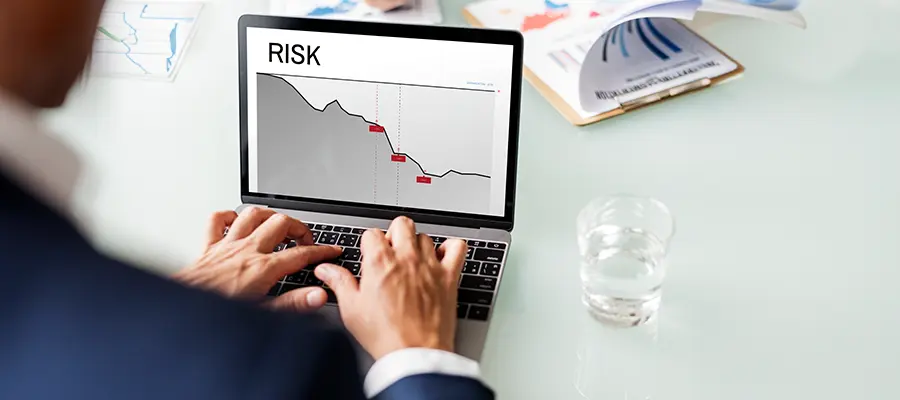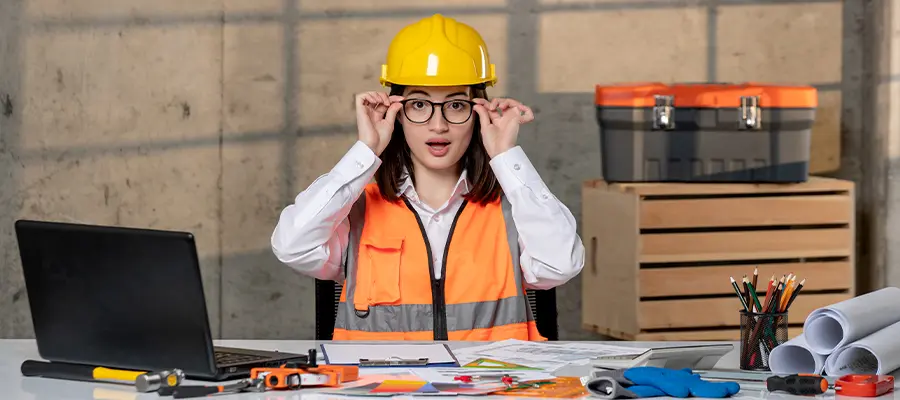What is Risk Management Construction?
The process of evaluating and implementing procedures to reduce the impact of risks in construction projects is known as construction risk management. This risk management process entails extensive planning to build a plan that enables project managers to recognise, track, and reduce risks as they materialise.
The early phases of the construction planning process involve developing a construction risk management plan. This plan describes the potential project risks and the response to address them. As part of this, a crew member should be assigned to take ownership of and resolve the problem.
In this blog, Brick & Bolt discusses the construction risk management process, the types of risk management, and how to avoid risk management in construction.
Importance of Risk Management in Construction
Understanding the diverse risks associated with the primary building sites can help explain the significance of closely monitoring them throughout the project’s duration. More precisely, poor risk assurance and associated decision-making frequently lead to legacy problems that persist throughout the project. Project officers will find themselves in a situation where they must rely on individuals who oversee construction hazards to report on them without adequate risk assessment and control, leading to delays and rework.
Moreover, the stakeholder structures involved in building projects are typically very complicated, with numerous interactions at play. For example, all governing bodies (board, steering committee, audit committee, etc.) have the necessary openness and understanding of the risks associated with the project. Project managers may, therefore, worry that they’re not hearing the whole picture from their teams and that negative news won’t reach them in time to adequately handle the risks, which would cause project schedules to be delayed and significant cost overruns to occur.
Types of Risk Management in Construction Projects
Any factor that could cause the project to be delayed or incur more costs is considered a risk. A construction site presents a multitude of risks. It’s important to understand the risks and their potential locations to develop an effective risk management strategy:

1. Financial Risk:
Nothing happens in the absence of money. You understand that no one gets paid, and equipment cannot be rented. It is necessary to identify any circumstances that may disrupt your cash flow because of this. This may involve increased material costs, market rivalry, and other factors. Understanding financial risks increases your chances of sticking to your spending plan.
2. Risk to Safety:
Your team is most important to you. With them, things can get done. However, they also face safety risks because many jobs they are given might be risky. Even with the expertise and experience of your workers, accidents might occur. To guarantee employee safety, be aware of the risks to their safety and the potential dangers they may encounter. Then, develop a safety strategy.
3. Legal Risk:
Overcoming budget, schedule, and scope limitations is just one aspect of managing a construction project. Legal restraints include rules, code infractions, and disagreements over contract terms with customers, suppliers, and subcontractors. Your building project may need fixing for any of these reasons.
4. Project Risk:
Project risks are the common risks of project management that come with overseeing any project. These include running behind schedule, missing deadlines, and managing resources poorly. The project manager for construction needs to be meticulous and aware of any obstacles that could cause the project to go off course.
5. Environmental Risk:
This is also known as an “act of God,” which includes earthquakes, floods, and other natural calamities. Anything that nature unpredictably unleashes that renders the building site unusable is expensive and could be disastrous for a construction project.
The Process of Construction Risk Management
A construction project’s risk mitigation procedure is similar to any other project. The only difference is the kinds of risks you manage in the construction business. The risk management procedure consists of the following five steps:

Identification:
To begin with, jot down every potential problem that might occur. Investigate, consult with your team, and review historical data from comparable construction projects in the past. Although you can always alter and update this identification list, it’s best to establish a deadline to avoid becoming bogged down in the details.
Evaluation:
Not all risks are equal. Certain events are less likely to happen than others. One method to evaluate your list of hazards is to use a risk assessment matrix, which shows the possibility of each risk and its potential impact on your project. If a risk materialises, creating a risk assessment matrix will assist you in managing it.
Mitigation:
It is the process of putting in place a backup plan to lessen the possibility and effect of the risks you previously recognised. Naturally, the ones you identified as more likely and impactful should be prioritised. Should it materialise, these should be given an owner who will manage the risk’s resolution and determine its existence.
Monitoring:
This is a continuous process where you try to spot these hazards as soon as they materialise. This involves keeping an eye on how well your mitigation approach is working. Stakeholders ought to be informed about these project risks and consulted as well. Encourage assistance from other department heads and give the group the authority to handle risks. Ask them to record any changes to a risk’s location on your risk assessment matrix.
Reporting:
Examine and discuss your construction risk management plan with the team and any relevant parties. These risk mitigation reports let you assess how well the backup plan works. Although an Excel spreadsheet can be used for this, project management software is a more effective method. Online systems automatically collect data, build dashboards to show progress, and produce easily distributable reports.
How to Avoid Risk Management in Construction

A building project includes risks at every stage of its construction. As soon as a danger materialises, you must be able to recognise it, act promptly, and use the proper risk management strategy. The design process is something to watch out for. Execution is when mistakes or omissions can cost you.
In addition, there are external risks, such as managing the demands for change from new stakeholders. These could severely impact your construction risk management plan. Once construction commences, laws and local requirements may change, and the environmental analysis may not be comprehensive.
It is also your responsibility to monitor the staff. An inexperienced team asks for risk, so select seasoned experts and provide them with safety training. Likewise, low morale might result in conflict or personnel attrition. Remember to check your construction documentation for discrepancies and maintain current permits. These are only a handful of the numerous variables to consider when administering your plan for construction risk management.
In conclusion, efficient risk management is important to the success of projects in the construction sector and should not be overlooked. The complexity of construction projects, with their wide range of stakeholders, complex procedures, and external factors, emphasises the need for a strong risk management system.
Construction risk mitigation calls for a proactive strategy that spans the project’s lifecycle. The identification, evaluation, and prioritisation of possible risks provide the basis for well-informed decision-making, resource allocation, and the creation of backup plans. When conducting thorough and timely risk analyses, project teams may negotiate uncertainty skillfully and respond to unforeseen obstacles.
Risk management will continue to play an important role in guaranteeing the success and sustainability of construction projects as the industry develops and embraces innovation and emerging technology. Construction projects may prosper in a complicated, unpredictable, and dynamically changing environment when they adopt an anticipatory risk approach and employ flexible tactics.

